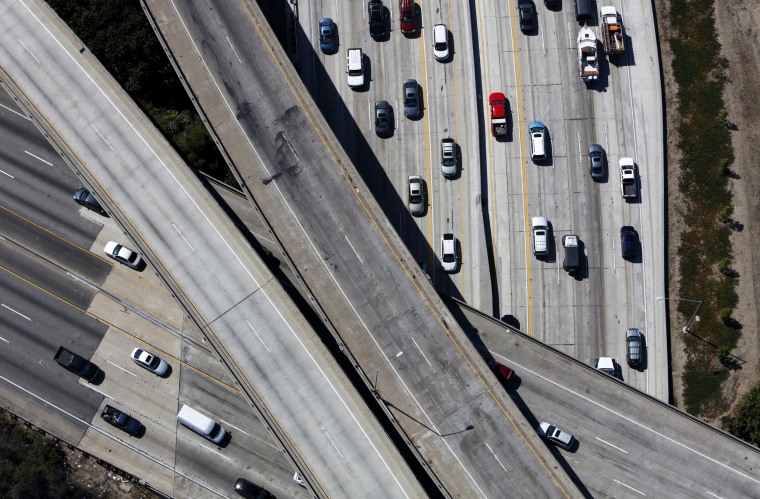At least 7 million Americans were in serious delinquency on their car loan — 90 or more days behind — at the end of 2018, according to data released Tuesday by the Federal Reserve Bank of New York.
That's 1 million more than at the end of 2010, after the recession.
Now, as Americans' appetite for new cars continues unabated, an advocacy group is sounding the alarm over the growing level of auto debt carried by U.S. consumers.
In a report issued Wednesday, U.S. PIRG warns that the continuing rise in auto debt is putting many consumers in a financially vulnerable position, which could worsen during an economic downturn.
"More and more people are buying too much car for what they can afford," said Ed Mierzwinski, senior director of U.S. PIRG's federal consumer program.
The group's new report delves into the financial implications and policy-related aspects of Americans' reliance on cars. It shows that the aggregate amount of auto debt that consumers carry — roughly $1.27 trillion — is 75 percent more than the amount owed at the end of 2009 (it's 51 percent when adjusted for inflation).
Overall, auto debt accounts for about 9 percent of total U.S. consumer debt, up from 6 percent in late 2011, separate data from the Federal Reserve Bank of Kansas City shows. Among subprime borrowers — those with credit scores below 620— the delinquency rate was 16.3 percent in mid-2018. In 2015, that figure was 12.4 percent.
Part of the overall growth in auto debt comes from consumers' shifting preference for larger, more expensive vehicles such as trucks and SUVs instead of sedans or compact cars. The average price of a new vehicle is now about $37,100, compared with $27,573 five years ago, according to auto research firm Edmunds.
For consumers — the bulk of whom finance their purchases — that means higher balances and loans that stretch longer. As of January, the average amount financed was $31,707 and the average loan length had reached 69.1 months, up from 61 in 2010, according to Edmunds.
Rising interest rates also make the cost of borrowing more expensive. The average rate on an auto loan is roughly 6.2 percent, compared with 5 percent a year ago. However, the lower a consumer's credit score, the more they can expect to pay in interest — even in the double digits.
To illustrate the difference that the interest rate makes: If you pay 4 percent on a $30,000 loan over 72 months, you'd pay about $470 a month and end up shelling out close to $3,800 in interest.
By comparison, the same amount financed for the same length of time but at 10 percent interest would result in monthly payments of $555 and interest totaling more than $10,000. And, the longer the loan term, the greater the chance you could reach a point where the amount you still owe on the loan is more than the value of the car itself.
